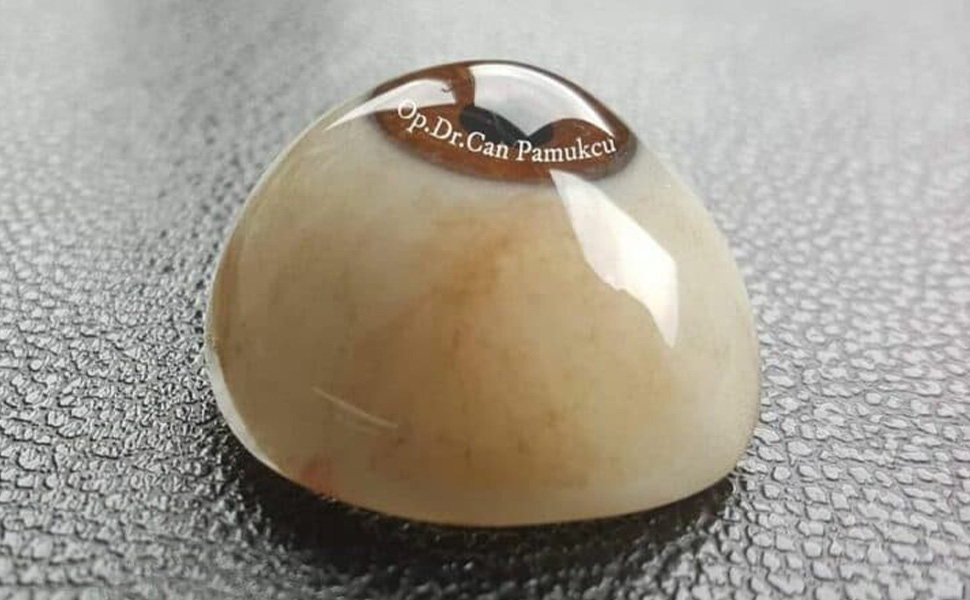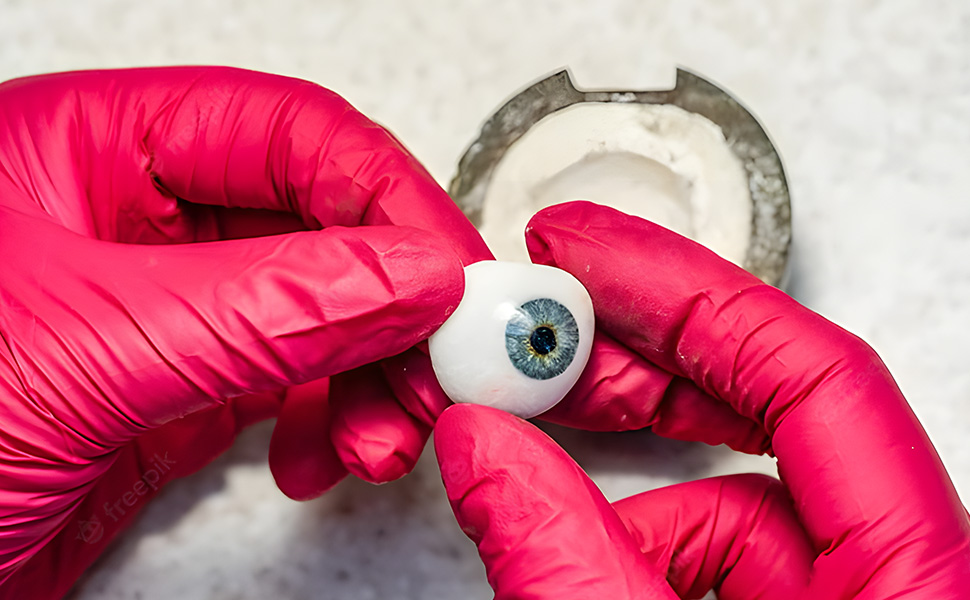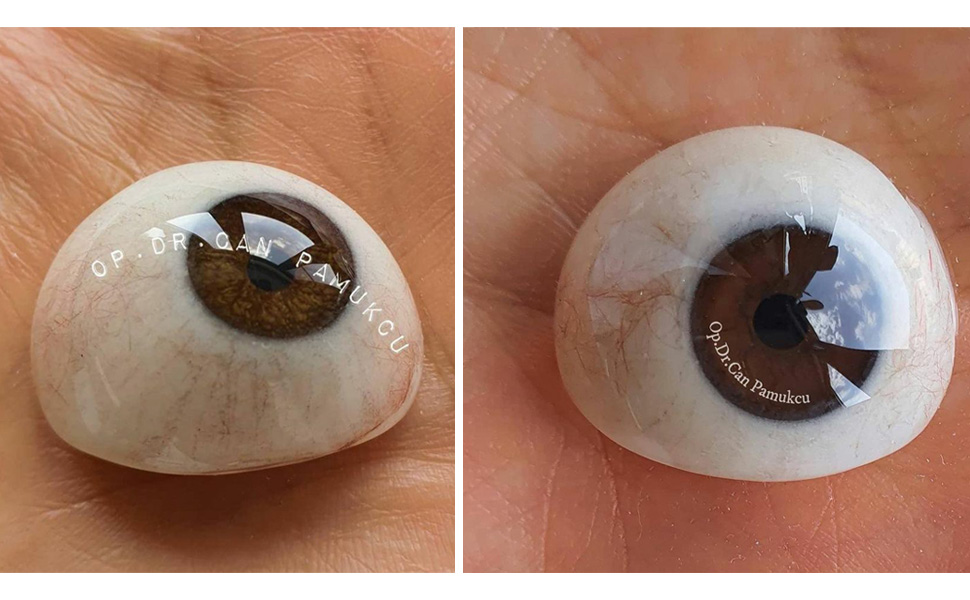
Custom prosthetic eye It is a procedure that has both physiological and social impact.
Eyes are the most distinctive feature of the face. They are the entirety of the structure that encompasses basic expressions, gestures, and facial expressions and forms the basis of self-image.
Therefore, during the eye loss process, the person first faces a physiological loss. Then, the person faces negative social effects. Organ loss and prosthetic eye If the construction process is not managed well, a process may develop that results in negative psychological effects on the person.
Today, thanks to scientific and medical innovations, individuals with eye loss are much more effective and have a much higher similarity rate. prosthetic eye they can access its use.
Custom prosthetic eyeThese are prosthetics that are custom-made for an individual based on the color, shape, and other visual characteristics of their natural eye. Every person's eye is unique, and therefore custom prosthetic eyesIt is specially designed to provide the closest possible view to the patient's natural eye.
Many people are ready prosthetic eye and personalized prosthetic eye He thinks that the concept means the same thing. However, there are actually big differences between them:
Difference in Production and Quality: Ready-made prosthetic eyes are generally standard sizes and shapes and are mostly mass and quickly produced structural units. Custom prosthetic eye It is produced with a meticulous and detailed plan, imitating the size, shape and visual quality of the individual's natural eye.
Similarity Difference: While the ready-made prosthesis is a structure preferred by the administration that will mostly hide the loss of the eye, personalized eye, The prosthesis is prepared with the aim of resembling the healthy eye and the potential to provide social communication without focusing on the prosthesis in a social sense.
Difference in Application and Usage: While the ready-made eye is generally preferred because it is visual and more economical, personalized prosthetic eye It is preferred because it offers both aesthetic and functional advantages, that is, comfort in the eye.
Cost Difference: A personalized prosthetic eye is prepared with the aim of meticulous quality and similarity potential during the special production process. This meticulous preparation process makes a difference. personalized eye prosthesis, is more expensive than a ready-made prosthetic eye.

Natural Look: A custom prosthetic eye provides the closest possible resemblance to a person's natural eye. This increases the patient's social comfort and adaptation to the prosthetic process. The individual can more easily overcome the shock associated with body image.
Comfort: Because it is specially designed and has a form that is compatible with the person's eye socket, personalized prosthetic eye, offers the patient a comfortable form of use. The prosthesis fits neatly within the eye, providing movement potential, proper posture, and a physiologically healthy use.
Movement Potential; Custom prosthetic eyes have the ability to partially mimic natural eye movements, unless there is a problem with the person's muscle structure, an obstacle due to a history of trauma, or a congenital deficiency in the eye muscles.

Custom prosthetic eye construction, involves a careful preparation and evaluation process.
Specialist ophthalmologist, evaluates the patient's general health status, the condition of the eye cavity and the patient's expectations and gives approval so that the prosthetic eye can be designed appropriately.
If the eye structure and socket are suitable for prosthesis application prosthesis application process is started.
But sometimes the eye socket can be damaged due to many reasons. prosthetic eye application It may not be ready for the eye or it may not be possible for the prosthetic eye to fit into the eye socket.
In case of such an obstacle prosthetic eye application The surgical preparation process is planned beforehand.
Post-operative physician evaluation and post-recovery physician approval prosthetic eye application process begins.
Prosthodontist, takes a mold of the patient's eye cavity and determines other visual qualities and combines all these criteria in the construction of the prosthetic eye.
Prosthetic eye specialist, carefully examines the color and other visual details of the patient's healthy eye and prepares the prosthetic eye according to these details.

Prosthetic eye, with detailed and careful preparation process personalized eye prosthesis Once prepared, the prosthesis specialist inserts the prosthesis into the patient's orbit. During the delivery phase, additional adjustments are made, and the prosthesis begins to be used.
The individual is informed by the prosthodontist about prosthesis use and care procedures. They are also informed about the subsequent process.
The patient begins to adapt to life with the prosthetic eye. During this process, the patient learns how to use, clean, and care for the prosthetic eye.
The patient stays in contact with his/her doctor periodically regarding his/her prosthesis, eye socket and other possible medical needs by following the follow-up examination program planned by his/her doctor.
Custom prosthetic eye Although it is considered a fundamentally physiological need, the social and psychological support it provides to the individual remains at the forefront.
Careful and thorough planning of the preparation process will determine the degree to which the prosthetic eye resembles the healthy eye. Preparation time is the most important factor in this process. To produce a more artistically high-quality prosthesis, the prosthetist must have the necessary time.
A personalized eye, Prosthesis preparation can be completed in 1 day or 1 week…
The potential nature of the work determines the duration. The timeframe for the prosthesis construction process can be determined based on the patient's individual preferences.
In conclusion, use of prosthetic eyes It provides convenience in life. The primary goal is for the individual to perceptually remove the loss of an organ from the center of their life, complete the grieving process related to the loss or absence of an organ, integrate the prosthesis with their body image, and return to a normal life.







